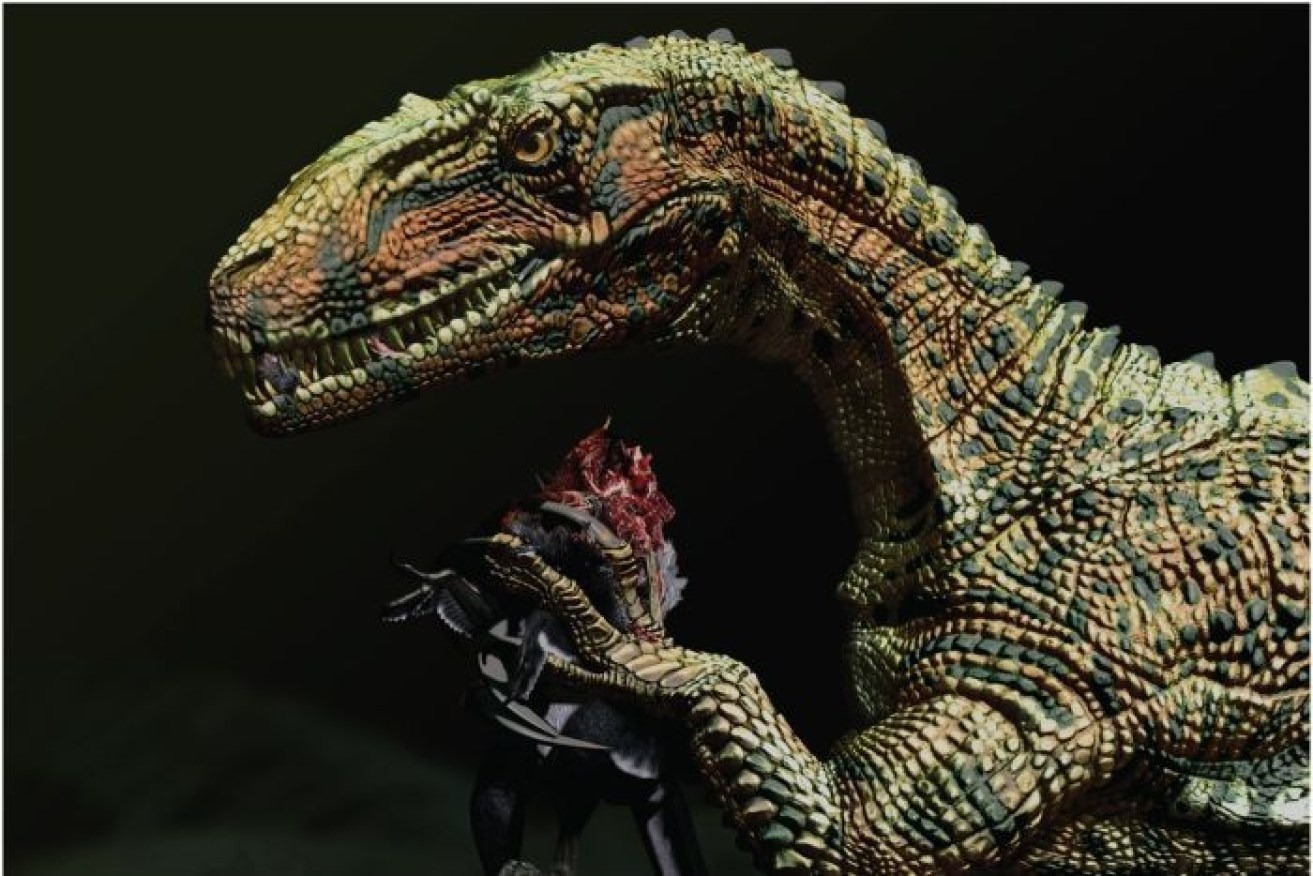Scientists hail biggest carnivorous dinosaur ever discovered in Australia


An artist's impression of Australovenator preparing to eat its prey. Photo: Travis Tischler
Remains from the largest theropod dinosaur ever discovered in Australia have been uncovered in western Queensland.
The bones were first uncovered in 2017 at a fossil field in Winton, but were only recently identified as most likely belonging to the Australovenator wintonensis species, discovered in 2006.
The find didn’t elicit much excitement at the time.
“They didn’t look like much at all, ” says lead researcher Dr Matt White, a palaeontologist at the University of New England, NSW.
“We had a really good look through all of the fragments and that’s when I got quite excited because we started to find the distal elements of bones that resembled a theropod, which are extremely rare,” he said.
While the bones cannot be definitively attributed to a species, they closely resemble an Australovenator wintonensis specimen found less than two kilometres away in 2006.
The ferocious creatures could be up to 2 metres high, between 5 to 7 metres long, said Dr White, and were similar in appearance to the velociraptors depicted in the film Jurassic Park.
“Except the claws are on the hands, not the feet,” he said.
“It had quite large hands, but on each hand it had two recurved claws that were quite large … and like birds you have a horny sheath over the top so they would have ended up round about close to 25 to 30 centimetres.”
Each hand sported two claws which were “used for grappling prey”.
“This guy may have actually used its feet to kick and puncture prey as well,” he said.

Lead researcher Dr Matt White said when the bones were first discovered “they didn’t look like much at all”. Photo: Supplied
While the creatures may have done some scavenging, it is almost certain some of them were hunting the same prey.
“Given the amount of teeth we’ve found [it is] probably not just one feasting on a carcass, it would have been two or three.”
Sauropods — long-necked herbivores that got around on four limbs — were almost certainly Australovenator’s main prey, Dr White noted.
“Every sauropod site that we have dug in over the years, we find these isolated shed teeth,” he said.
“We haven’t really found teeth that are much bigger than Australovenator, so these things would have been the top carnivore.
“We just haven’t found any other evidence of anything larger than these guys, Australia-wide.”
While there is much consensus on the dinosaur, the question of whether the dinosaurs had scales of feathers is a bone of contention among the scientific community.
“There’s two major groups [of theropods] — you’ve got your more primitive Tetanurans where Allosaurus is, and then have your Coelurosaurs where you have Tyrannosaurus.”
He said the Tyrannosaurus was a member of the group that probably had feathers.
“I suspect it is within the more primitive group, but it is still heavily debated.”

Researchers at the fossil dig site near Winton in central western Queensland. Photo: Dr Matt White
The good news is, despite the differing opinions, the find is critical in helping scientists closer to answering such questions.
“We can start to work out, well — did they have feathers? Which group they sat in, and unfortunately the preservation out at Winton is not good enough to preserve feathers.”
The newly identified theropod bones are on display at the Australian Age of Dinosaurs Museum near Winton.








